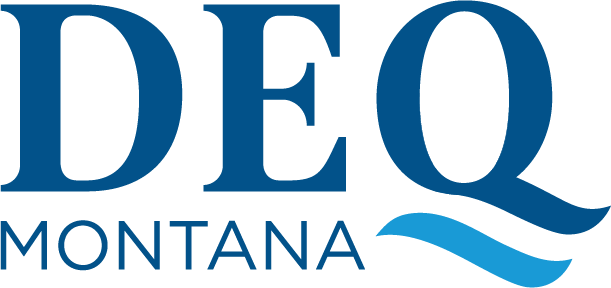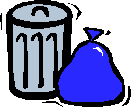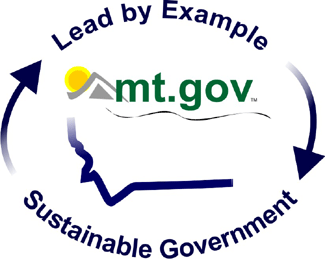Program Overview
Recycling in Montana comes with barriers that most other states do not have. Due to our low population density and large geographical area, it is very difficult to find markets for materials that are both economically and environmentally sustainable and desirable. Currently, Montanans recycle about 19 percent of the waste generated here. The DEQ Recycling program aims to assist citizens, local and state government, business, non-profits, and other stakeholders in finding creative uses for discarded materials.
DEQ’s Recycling program assists Montana citizens, businesses, and local and state governmental agencies in preventing pollution and reducing by providing resource information and technical assistance about environmental management issues encompassing waste reduction and recycling, pollution prevention, and sustainability practices.
The program also is responsible for implementing the Montana Integrated Solid Waste Management Plan (IWMP) as required under the Montana Integrated Waste Management Act. The program is responsible for reducing solid and hazardous wastes in Montana through source reduction, increased reuse, recycling, and composting as well as finding creative ways to market wastes as materials and commodities.
Events:
Christmas Sustainability Tips!
- Christmas Tree Recycling
- Lithium-ion Battery Safety During the Holidays
- Ideas for a More Sustainable Holiday Season
New guidance available:
Recycling Program Contacts
Recycling Information
Recycling Targets
The 1991 Legislature created the Integrated Waste Management Act (75-10-803 MCA), which directs Montana to reduce the amount of solid waste disposed of in landfills or incinerated.
The Act included target goals for increasing recycling and composting rates. Those targets were updated in the Integrated Waste Management Plan 2018:
- 17% of the state's solid waste by 2008;
- 19% of the state's solid waste by 2011; and
- 22% of the state's solid waste by 2015.
DEQ staff work to create local markets for recyclables because transportation to more industrialized areas often costs more than the value of recyclables. Montana-based businesses that use recycled materials in their manufacturing processes are the key to supporting Montana recycling programs. Businesses and consumers who purchase recycled goods also support the demand for recyclables and support rural recycling programs.
Where to Recycle
Landfill Locations & Materials Accepted Excel file
Anaconda and Deer Lodge County
(20 KB)
Billings
(35 KB)
Bozeman and Gallatin County
(17 KB)
Choteau and Teton County
(16 KB)
Great Falls and Cascade County
Havre
(23 KB)
Helena and Lewis and Clark County
(41 KB)
Jefferson County (Scroll down or click on FAQ)
Kalispell and Flathead Valley
(961 KB)
Lake County
(554 KB)
Livingston & Park County
(23 KB)
Missoula
(27 KB)
Ravalli County
Sanders County
Yellowstone Area
(83 KB)
Fort Belknap: Aluminum cans are collected in recycling containers at Hays, Lodge Pole, and Fort Belknap Agency. The Fort Belknap Environmental Department is asking tribal programs, businesses, and local schools to participate, as well as the public.
The Earth 911.org
Earth 911 is a cool, interactive website that provides information on recycling and pollution prevention. Just type in your zip code to find recycling locations and learn what and where to recycle near you. If there is no local recycling, the site lists the nearest recycling centers.
Recycling Statistics
Montanans recycle about 19 percent of the waste generated here and the business of recycling brings jobs and money into the state. Recycling businesses and brokers in Montana participate in a voluntary recycling survey every year which is allowing DEQ to track progress toward the 22 percent state recycling target. The recycling target is set in the Montana Integrated Waste Management Plan. The plan recommends strategies to increase recycling in communities and across the state.
Reaching this target will depend on each Montanan fully participating in the recycling programs available in their communities. Follow our progress toward this goal by reading the annual survey reports below.
Recycling is Good Business for Montana
This report describes the economic and ecological impacts of recycling in Montana. Reports not highlighted are available by contacting the Recycling Program.
- 2016 Summary of Recycling in Montana
- 2015 Summary of Recycling in Montana
- 2014 Summary of Recycling in Montana
- 2013 Summary of Recycling in Montana
- 2012 Summary of Recycling in Montana
- 2011 Summary of Recycling in Montana
- 2010 Summary of Recycling in Montana
- 2009 Summary of Recycling in Montana
- 2008 Summary of Recycling in Montana
- 2007 Summary of Recycling in Montana
- 2006 Summary of Recycling in Montana
- 2005 Summary of Recycling in Montana
- 2004 Summary of Recycling in Montana
Recycling is a challenge in Montana. The state's comparatively low population is scattered over a large geographic area. Compounding the issue is the distance to processors (industry) that use the recyclables as raw materials in their operations. The DEQ staff continues to work with industry and businesses to develop markets within Montana that can sustain and expand recycling programs across the state.
Montana Recyclables
- Batteries
- Cell Phones
- Compact Fluorescent Bulbs (CFLs)
- Compost
- Construction and Demolition Materials
- Electronics
- Glass
- Junk Mail
- Office Paper, Thermostats, etc.
- Oil
- Plastics
- Tires
- Yellow Pages: Opt-Out
Recycling Links of Interest
- The Flathead County Solid Waste District Central Landfill. Where to recycle in the Flathead Valley.
- The Missoula Urban Demonstration (MUD) Project is a 25-year old non-profit in Missoula (formerly the Down Home Project) that promotes sustainable living practices.
- U.S. Environmental Protection Agency Automotive Refinishing Partnership — "The DfE Program is working in partnership with the auto refinish (collision repair) industry to promote best practices and technologies that reduce toxic emissions of diisocyanates, organic solvents, heavy metals, and other hazardous air pollutants." (Quote from the DfE web site.)
Commercial Recycling in Montana
The Local Government & Recycling Program is dedicated to increasing the amount of business recycling in Montana and diverting commercial waste from the landfill through outreach, education, and technical assistance. Our mission is to work with businesses to overcome the barriers to recycling, and monitor the commercial recycling rate throughout the state.
The fact sheets were created by the Association of State and Territorial Solid Waste Managers (ASTSWMO), a national organization with diverse task forces working on solid waste management issues. The ASTSWMO Municipal Recycling Task Force prepared the Commercial Recycling reference document for state agencies and local governments, although businesses will also find the fact sheets helpful.
Commercial Recycling can be divided into sectors, each with its own barriers to recycling and waste stream composition. The document summarizes major initiatives across the country for increased recycling of commercial wastes. ASTSWMO intends to review and update the fact sheets from time to time as new information becomes available.
The following business sectors are included:
| Business Sector |
|---|
| Airports |
| Agriculture |
| Construction |
| Dry Cleaners |
| Education (K-12, Higher Education |
| Financial Institutions |
| Hospitals/Healthcare Industry |
| Mass Transit |
| Multi-Family Housing |
| Office Recycling |
| Retailers |
| Small Businesses |
See Title 15 Chapter 32 Part 6 MCA for more information.
Recycling Property Credit (business credit)
An individual, corporation, partnership, or small business corporation may receive a tax credit for investments in depreciable property used primarily to collect or process reclaimable material or to manufacture a product from reclaimed material according to the following schedule:
- 25% of the cost of the property on the first $250,000 invested;
- 15% of the cost of the property on the next $250,000 invested; and
- 5% of the cost of the property on the next $500,000 invested.
The credit may not be claimed for:
- investments in depreciable property in excess of $1 million
- an industrial waste generated by the person claiming the tax credit unless:
- the person generating the waste historically has disposed of the waste onsite or in a licensed landfill; and
- standard industrial practice has not generally included the reuse of the waste in the manufacturing process. - an investment in property used to produce energy from reclaimed material.
Purchase of Recycled Materials Deduction (business deduction)
- Taxpayers that purchase recycled material as a business-related expense can deduct 10% of the expense of these products from federal adjusted gross income in arriving at Montana adjusted gross income.
- The purpose of providing a tax deduction for the purchase of recycled materials is to encourage the use of goods made from reclaimed materials, especially post-consumer materials, and to discourage consumption of the same goods made from new materials.
- The definition of recycled material is determined by the Department of Revenue.
Deduction for Purchase of Montana Produced Organic Fertilizer (personal and business deduction)
- Taxpayers may deduct expenditures for organic fertilizer, such as compost, that is produced in Montana and used in Montana.
- The deduction is allowed if the expenditure was not otherwise deducted in computing taxable income.
- The deduction is in addition to all other deductions from adjusted gross individual income allowed in computing taxable income under Title 15, chapter 30 or from gross corporate income allowed in computing net income under Title 15, chapter 31, part 1.
Credit Against Certain Permitting Fees for Certain Uses of Post-Consumer Glass (business deduction)
A person(s) with beneficial interest in a business may receive a credit against the fees imposed in 75-2-220 (Air Quality) for using post-consumer glass in recycled material if qualified under HB499 Section 3.
- The credit may be claimed for glass used in recycled material in the calendar year prior to that which the applicant is paying fees under 75-2-220.
- The amount of the credit is:
-$7 for each ton of post-consumer glass used as a substitute for nonrecycled materials; with
-a maximum allowable credit in any calendar year of $1,500 or the total amount of fees due, whichever is less.
The post-consumer glass used in recycled material may not be an industrial waste generated by the person claiming the credit unless:
- The person generating the waste historically has disposed of the waste onsite or in a licensed landfill; and
- Standard industrial practice has not generally included the reuse of the waste in the manufacturing process.
Recycled Products Eligible for Tax Deduction
Proposed site only. Under Construction. Do Not Reference.
This list is created and maintained by the Montana Department of Revenue and the Department of Environmental Quality.
List of Recycled Products Eligible for a Tax Deduction
This list of recycled-content products provides guidance for businesses that wish to support and encourage recycling by increasing demand for certain recycled materials. Montana supports such businesses by providing a financial benefit to “buy recycled”. The list also includes certain “raw materials” that may be eligible when purchased for manufacturing.
Requests and suggestions for consideration may be directed to the Department of Environmental Quality. The Department of Environmental Quality evaluates the requests and provides recommendations to the Department of Revenue. Final decisions regarding eligibility for tax deductions are made by the Department of Revenue.
IMPORTANT: This is a list of products that qualify for the business recycling DEDUCTION, as defined under MCA 15.32.6. A 10% deduction is allowed only if the products have been claimed as a business-related expense on your income tax return.
Please note: There are currently no categorical exclusions for recycling equipment.
Please note: Not all recycled-content products qualify for the tax deduction.
- Purchases that are NOT a business-related expense claimed on income tax returns are NOT eligible.
- Purchases for re-sale do NOT qualify. Retailers or brokers that purchase recycled-content products as inventory for re-sale CANNOT qualify for a deduction.
- The Department of Revenue may determine ineligibility after evaluating the context in which the product is used.
- Some materials are Categorically Excluded.
Current Categorical Exclusions
Metals1
Metals such as aluminum, steel, copper, and similar non-precious metals are ineligible for the tax deduction.
Cardboard Packaging2
Cardboard packaging is ineligible for the tax deduction. Other cardboard recycled-content products remain eligible.
____________________________________________________________________
1 Most common metals have well-established demand and infrastructure for collecting and processing scrap. The Department of Environmental Quality reviews current industrial practices for specific metals and if it determines, as the EPA has with steel, that recycled-content has become an integral part of modern manufacturing processes, the Department will consider the market for that recycled metal as “well-established”. Well-established recycling activities negate the need for further market-building incentives, and the Department will recommend that purchase of those metals be ineligible.
2 According to the Fibre Box Association cardboard packaging recycling works so well that in 2006, the average corrugated box contained 43% recycled-content. For this reason the Department of Environmental Quality determined that the market for recycled cardboard into packaging products is well-established, and recommended that packaging use of the recycled material is ineligible. Other uses for recycled cardboard may still be eligible for the deduction.
Pay-A$-You-Throw
Pay-As-You-Throw (PAYT) is a fee-for-service system that allows residential and commercial customers to pay for the amount of waste they produce instead of paying a fixed fee or tax for solid waste services. PAYT creates a direct, economic incentive for citizens and businesses to reduce the amount of waste generated, and to increase recycling and composting activities. Communities in Montana that have implemented PAYT systems have realized savings in waste disposal costs.
Why is PAYT such a great program? Because PAYT can be customized to meet the unique needs of each community and can result in dramatic declines in the amount of waste going into landfills, thereby reducing solid waste costs.
In 1993, the US Environmental Protection Agency (EPA) issued new rules for waste disposal which, while designed to minimize pollution from solid waste, increased costs to small communities across Montana. Many small landfill districts in Montana are looking for ways to keep the lid on their waste management costs and PAYT may be the answer.
Can PAYT work in your community? PAYT works in communities that have alternative programs in place for waste management, such as recycling and composting services. The Air, Energy and Pollution Prevention Bureau can help your community research available recycling and composting opportunities so that your community can implement a customized PAYT program.
Bozeman's Pay A$ You Throw Program
The City of Bozeman implemented a Pay-As-You-Throw (PAYT) program in 1991. Bozeman was the first city to try this program in Montana and was the only community with a program in place until the City of Lincoln implemented one in 1995.
Bozeman established a PAYT program to extend the life of the landfill and give residents some control over their garbage fees. Residents pay for garbage disposal in two ways under Bozeman's PAYT program. A flat fee or base rate is established by the City Commission and assessed to annual tax bills. This ensures that revenue is generated to cover some basic costs of solid waste services. Residents choose the other payment method and rate depending on the volume of garbage they actually throw away and how much they recycle. PAYT programs usually increase municipal recycling rates by encouraging residents to separate recyclable items from their trash, reducing the volume and costs of the trash they do throw away.
Initially, Bozeman used a tag and bag system that required citizens to purchase tags that were then attached to garbage bags placed for pickup. The tags tracked themselves by how many sold. The city based the estimates and projections for their new PAYT program on how many bags sold. Tags were purchased at City Hall for 20 or 30 pound bags. Roger Sicz, Bozeman's Street and Sanitation Superintendent, noted that it is difficult to estimate the volumes of bags but this risk must be accepted as part of the cost of doing business. Residents disposed of sofas or white goods by estimating the weight and attaching one tag per 30 pounds.
It took residents time to get used to the new program and the need to stop at City Hall to purchase tags. Some unhappy residents chose to change their garbage service to a private hauler because of the inconvenience. Over time, residents became more familiar with the program and were less frustrated.
Now Bozeman offers residents automated garbage service utilizing multi-sized totes. This makes it more convenient for residents to participate in the City's program. Residents choose either a 35, 65, or 100 gallon sized tote to fit their disposal needs and recycling habits. Bozeman continues to offer the tag/bag system and still sells some tags every year but the automated garbage collection program is more popular.
Residents paying for the 35-gallon tote choose between pick up once per week or pickup just once per month with fees scaled accordingly. Households choosing once per month pickup use a different colored lid on their tote, which is set out the first week of every month. The City does not offer once per month pick up for the 65 and 100-gallon totes.
Households base their tote size choices on family size, buying habits, and the amount of waste they recycle. Bozeman has six organizations offering drop-off recycling services to residents. Bozeman does not offer curbside pickup of recyclables. Organizations include small volunteer nonprofits offering aluminum can recycling as part of their fundraising efforts, larger nonprofit cooperatives specializing in recycling services, and recycling businesses collecting diverse materials.
Recycling is an essential part of a successful Pay-As-You-Throw program because it gives residents choices regarding the amount of waste they throw away. Communities considering PAYT need to establish recycling opportunities before or at the same time that PAYT is implemented. Communities with recycling already available often see participation rates increase when volume-based pricing is established.
Roger Sicz, former Street and Sanitation Superintendent, states that "Waste volumes definitely decreased due to more recycling and the life of the landfill was extended somewhat. However private haulers also dump in the landfill and we don't know how much their customers participate in recycling because their bills are not tied to the volume of trash they throw away. But we know recycling rates have increased and I believe that people are also practicing source reduction at the point of purchase."
For more information on Bozeman's Pay-As-You-Throw program, call the City of Bozeman at 406-582-2332. For information on PAYT and implementing a program in your community, contact Dusti Johnson, Recycling and Marketing Development Specialist, at 444-6499.
Lewis and Clark County Pay-As-You-Throw (PAYT) Program
On January 1, 2001, Lewis and Clark County began a modified Pay-As-You-Throw (PAYT) Program in the Scratchgravel Solid Waste District. Traditional PAYT programs are a fee-for-service system that allows residential and commercial customers to pay for the amount of waste they produce instead of paying a fixed fee or tax for solid waste services. PAYT is attractive because it creates a direct, economic incentive for citizens and businesses to reduce the amount of waste generated, and to increase recycling and composting activities.
Lewis and Clark County's program was modified so that participants will not see a major change in the way they pay for solid waste disposal and will continue to pay the assessment fee through their taxes. This assessment fee from 1993 through 1998 was maintained at the same level. Participants experienced their first fee increase in six years when the County increased the fee by 5.4% in 1999. County officials hope that by implementing PAYT they can avoid or delay further fee increases because the program will ensure that all participants are paying their fair share for waste disposal. As the program matures officials will be able to determine if fee adjustments (up or down) are warranted.
In preparation for effective decision-making, the county implemented a permit system in 1995 and started gathering the data needed to assess accurate fees for waste disposal. Permits were assigned to each homeowner and business and the county began to track the amount of garbage disposed of by individual permit holders. Will Selser, Solid Waste Manager for Lewis and Clark County, explained that a voluntary limit of two-tons (4,000 pounds) per year was established and originally worked just fine. Eventually the amount being disposed of increased and it became apparent that some participants were generating more than the two tons of waste for which fees were assessed. In fact, the County determined that approximately 14% of permit holders disposed of more than two tons annually. In 1999, the District paid $124,000 to cover the disposal of this extra waste.
Selser stated that after examining all the data, the district chose to implement a modified PAYT program with an enforceable limit of two tons per year and strict enforcement of the requirement for permits to be shown before access to the transfer station or landfill. In the past, attendants were more flexible, but strict adherence to the permit policy is necessary to accurately assess fees and ensure that permit holders are charged only for waste they generate. Anyone without a permit may return later with the permit or may choose to pay a minimum of $9.50 (400-lbs. maximum) to dispose of their load right away.
A credit of two tons per permit holder will be carefully tracked and attendants will issue a warning as permittees approach the upper limit. Upon exceeding the limit, another warning is mailed to the property owner and any additional waste is charged at the rate of 2.4 cents per pound. For billing purposes, the permit year will change to a fiscal year ending on June 30th. Invoices for waste charges beyond the two-ton credit will be mailed out after the end of the fiscal year. Any invoices left unpaid by the due date will be placed on the property's tax notice as unpaid debt.
The Scratchgravel Solid Waste District's PAYT program includes all county residents except those in East Helena, Augusta, Lincoln and Helena. Helena officials hope to implement a PAYT program in the future and the City of Lincoln has had one in place for several years.
For more information on Lewis and Clark County's program contact Sherrel Rhys at 406-227-1189. For information on PAYT and implementing a program in your community, contact Dusti Johnson, Recycling and Marketing Development Specialist, at 406-841-5253.
Scales Not Needed For PAYT Programs
The benefit of scales to weigh waste no doubt contributed to the ability of Lewis and Clark County to accurately track tonnage per permit holder and establish baselines for beginning a PAYT program. However, other communities in Montana have successfully implemented PAYT programs without the expensive scales that are often cost-prohibitive to smaller communities.
Lincoln's program has been a model for other communities such as Sanders and Granite Counties. Waste from Lincoln is collected at a container site and transported to Great Falls for disposal. The attendant at the container site uses a hand-held tri-corder to scan bar codes on cards held by users of the site. The codes contain information such as the property identification number used by the county for tax assessment.
Tri-corders cost approximately $1,000 at computer supply stores and are an inexpensive way for communities to gather data and charge fees according to the amount of waste disposed of by individual users. Computer software packages can be purchased to assist with compiling data, generating annual disposal rates of users and determining annual fees.
Lack of scales does not prevent Lincoln from tracking the amount of waste being disposed of by individual users. The attendant uses general volume guidelines to estimate and manually enter the amount of waste per user into the tri-corder. For example, a conventional garbage can is estimated to hold about .15 yard. A short-bed pickup with the load rising a little above the sides would hold about 2 yards and a long-bed pickup would hold about 2.5 yards. Six garbage bags would hold about a yard. In 1998, Laura Nicolai (at that time an employee of the Lincoln Refuse District) stated that the estimation system was remarkably accurate. Estimates were within about 100 cubic yards per year or equivalent to a 1% variation, as shown by the amount of waste actually deposited in the containers.
Raise Money and Compete for Prizes
Aluminum, Paper & Cardboard
Money can still be made from recycling aluminum cans, paper, and usually but-not-always, cardboard. Prices do fluctuate in response to changing market conditions.
- Sort and separate recyclables according to grade – this increases the value of the recyclables and should result in a higher price for your collected commodities.
- Be aware that choosing a single-stream or co-mingled program which does not require sorting, will also generate less revenue.
- If producing consistently “clean” (i.e., no unwanted materials included) recyclables, work with your local recycler to obtain premium prices for the material you provide.
When contracting for services, tie the prices paid to current, published prices. For instance, include contract language that guarantees a return of 80 percent of current prices as listed on the Yellow Board, American Metals Market, and similar commodity markets. You may ask for copies of the publication showing regional and national prices referenced for that particular sale.
TerraCycle
TerraCycle offers national programs ("Brigades") to collect previously non-recyclable or hard-to-recycle waste. Most programs offer a donation for each item collected for recycling, in addition to free shipping.
- Many programs to choose from;
- Website has pictures of the products manufactured from the recyclables;
- No fee (in most cases);
- Free shipping;
- Can recruit business partners and citizens to have collection boxes and designate your school to receive the proceeds;
- Brigades available: drink pouches, plastic bags, Kraft Cheeses, Neosporin Tubes, Aveeno Beauty containers, candy cookie wrappers, cereal bags,and much more. All pay about 2 cents per item.
Returning Electronics for Cash
The following program offers the following features:
- 13 yrs and older can register to sell products;
- Must be able to answer questions about item’s condition;
- Searches Internet to find best prices (similar to travel sites);
- Allows comparison of offers;
- Does NOT accept non-working items for recycling; but will find recycling locations near you;
- Items entered one at a time; and
- ‘Our Impact’ button leads to information about best-selling items and brands.
Printer Cartridges
Some printer cartridge recyclers will also collect cell phones, but you may get more in return from a business specializing in cell phone refurbishment.
Staples
Collect spent printer cartridges and take them to Staples for a $3 reward. Just sign up for a Staples reward account and check with your local stor to verify the acceptable cartridges and get details. (The Staples website quotes a $2 reward, but the a Montana store confirmed a $3 reward.)Staples recently changed their program to allow one account holder to drop off no more than 10 cartridges per month.
Recycle printer cartridges and accumulate points to acquire equipment and supplies, although you can choose to receive a check instead. FundingFactory also accepts cell phones, but better prices may be realized through a business specializing in cell phone refurbishment. FundingFactory offers FREE shipping materials, promotional and business support supplies, live customer service representatives and your own online account. FundingFactory also holds contests for additional bonuses and prizes.
- No signup fees;
- Free container;
- Free tools and marketing material;
- Cash returned, not a points program;
- Prices are published on their website to see what you will be paid;
- Must include pricing list with shipment; and,
- $15 penalty for any laser cartridges received.
Source Reduction and Consumer Spending
We currently produce and consume goods at an unprecedented rate. The process starts with extracting raw materials and ends with disposing of used products. The result?
- resource depletion
- pollution
- loss of valuable habitat
- waste management problems, and often
- social and environmental injustice
Consuming less, and reusing or remanufacturing products can cut waste and the need for disposal.
Watch The Story of Stuff for an insightful and entertaining explanation of the far-reaching effects of our daily decisions. Organize a viewing for your friends and/or community group.
Information Disclaimer
Website links are provided for educational purposes only. Such links are not endorsements of any products or services in such sites and no information in such sites has been endorsed or approved by the Department of Environmental Quality.
Daily Habits:
- If you can’t recycle it – don’t buy it. Avoid purchasing goods that you know will end up in the garbage. For instance, bottled water – if you can’t recycle plastic bottles in your town, avoid buying bottled water and carry a reusable water bottle instead.
- Buy durable goods. If your budget will allow it, consider purchasing more durable goods. They may be more expensive initially, but they will last longer and are generally better quality.
- Swap and Trade. Look for opportunities to network with friends and co-workers to obtain needed tools, materials, or goods to avoid purchasing an item that you’ll only use once or twice.
- Visit garage sales and second-hand stores.
- Use online swap groups, such as:

- Businesses can use the Montana Materials Exchange to list unwanted materials or look for needed materials. This Montana State University Extension Service Program encourages recovery and reuse of diverse materials that would otherwise be discarded.
- Do without. Do you really need that new video game, book, knick-knack or trinket? Can you enjoy it without having one of your own? Control impulse-buying by walking away first and giving yourself time to evaluate whether you really need something or just want it because it struck your fancy.
Homes
Do you recycle at home? Do you know what can be recycled in your town?
Many people love Montana’s wide open spaces and the small town atmosphere that exists even in our larger cities. Montanans appreciate the lack of crowds, rush hour traffic, and industrial smoke stacks found in more populated and more industrialized areas of the U.S.
What does this have to do with recycling? Well, the same things that make Montana the special and uniquely beautiful place that it is, also make full-scale and wide-spread recycling difficult. Because of Montana’s low population and the fact that major industrial centers are long distances away, collecting recyclables and shipping them to markets in other states can make programs expensive to implement and maintain. These challenges can be addressed and many communities in Montana offer recycling programs for certain commodities, such as aluminum cans, bi-metal cans, newspaper, cardboard, and magazines.
Even communities without organized recycling programs often have some outlets for recycling certain commodities. To find out what can be recycled in your town, DEQ suggests:
- Contact your local public works department.
- Visit the Earth911.com website. Just type in your zip code to find recycling locations and learn what and where to recycle near you. If there is no local recycling, the site lists the nearest recycling centers.
- Visit the Recycle Montana website. This organization maintains a website listing locations across Montana that accept certain materials for recycling.
Recycling is just one way to reduce the amount of trash you throw away. Source Reduction means taking steps to reduce the amount of trash you generate in the first place. Consider using the following strategies to generate less trash:
- Buy in bulk.
- Buy only what you need.
- Stop Junk Mail.
- Choose recyclable packaging. (If plastic is not recycled in your town, and aluminum cans are, buy soda cans instead of plastic bottles.)
- Learn more about source reduction at the EPA website.
Bozeman's Tag and Bag Systems
Bozeman now has curbside recycling available and no longer has a landfill within City limits. The program described here no longer exists, but may still be duplicated by interested communities. To find out more, click Contact Us below. A Recycling & Marketing Development Specialist will be in touch to assist you.
Communities often choose this system to save implementation costs associated with purchasing garbage containers of diverse sizes. Another advantage of the tag and bag system is that it allows residents to continue with a familiar practice (using garbage bags) while introducing them to the concept of paying for just what they throw away.
Disposal fees are often "hidden" on property tax assessments or may be seen as a flat rate on water bills. Residents, when asked, often do not know the amount of money they spend on garbage disposal by the month or the year. By purchasing tags and not hiding the costs, residents see both the real costs of garbage disposal services as well as the financial impacts of their own purchasing and disposal habits.
Schools
Many resources exist for teachers wishing to discuss and encourage recycling. The nonprofit, Recycle Montana, advocates for increased recycling and sponsors a classroom education program.
In addition to these programs, educators and school administrators will find the following resources helpful: Manual for Implementing a School Recycling Program.
Clean Air Zone Montana
This program discourages school bus idling to reduce diesel exhaust exposure for children. The program also encourages use of alternative fuels in school buses. Sign up your school now to receive assistance!
Cornell University Composting in Schools
Provides a number of composting resources for teachers, including ideas for student research projects.
American Forest and Paper Association
Shares information, including environmental policies and recycling initiatives, about forest products such as paper and wood.
Earth 911
Lots of resources for teachers and students, plus information on local recycling opportunities.
Kids Domain
Lots of links with information on Earth Day, recycling, pollution prevention, environmental learning games, activities, and more.
Earth Day Network
Covers Sustainability, Environmental footprints, garbage, waste reduction and more.
America Recycles Day
Teachers and students can enter a contest to win a cruise and/or a new bike by pledging to recycle more in the coming year. Enter by visiting this website or DEQ's webpage to pledge and enter the contest.
NIEHS Environmental Health and Science Education
The Environmental Health Science Education website provides educators, students and scientists with easy access to reliable tools, resources and classroom materials. It seeks to invest in the future of environmental health science by increasing awareness of the link between the environment and human health.
NIEHS Teacher’s Curriculum Resources
Science-based curriculum resources that help teach the connection between a healthy environment and healthy bodies.
Kids
HEY KIDS! I'm Handy, and you can find me at Earth 911.org. I’ll help you find information, fun games and activities, great environmental links, and more. Together, we can all lend a hand to Make Every Day Earth Day!
Activities
Informational Programs
This fun website offers Recycling and Litter Prevention Information Programs.
Kids and Conservation
Learn what it takes to be conservationist, and why we should ‘conserve’ water, soil and wildlife.
Recycle City Game
This site has an interactive game and provides information about recycling for teachers and kids.
Planet Protectors Club
Planet Protectors help other people learn to reduce, reuse, and recycle
Special Events
America Recycles Day
Teachers and students can enter a contest to win a cruise and/or a new bike by pledging to recycle more in the coming year.
Pollution Prevention Week
Tips to help you get started with pollution prevention right now.
Earth Day Network
Covers Sustainability, Environmental footprints, garbage, waste reduction and more. Also has a GREAT Educators Network.
Earth 911.org
Earth 911 is a cool, interactive website that provides information on recycling and pollution prevention.
Just type in your zip code to find recycling locations and learn what and where to recycle near you. If there is no local recycling, the site lists the nearest recycling centers.
There is also lots of help available for school projects on water conservation, energy conservation, pollution prevention, recycling and more!
Alternative Products
All Montana citizens can avoid generating HHW by choosing more natural, alternative products.
Consumer Reports Greener Choices.org - This Consumers Union website provides non-commercial, independently researched, unbiased information so that consumers can find practical information on buying “greener” products with reduced environmental impacts.
Healthier Alternatives - This is a very useful guide which provides alternative solutions to replace or reduce the use of hazardous products.
Green Cleaning Parties - Women's Voices for the Earth, based in Missoula, Montana, provides this handy kit which includes recipes for homemade cleaning solutions.
Planning Green Events
When preparing for a special event, The Department of Environmental Quality encourages planning committees to incorporate means of waste prevention and reduction, recycling, and composting. Events are known to be one of the largest producers of waste in the U.S. However, most materials discarded at events are not waste. With proper planning and collection, most materials can be recycled or composted and diverted from landfill. There are many ways to incorporate these green practices at large or small events.
Follow these useful tips and guidelines that will help make a difference.
Special Event Recycling Guide — Best management practices guidebook for special event-generated waste in rural communities.
Create Healthy School Environments
School Laboratory Chemical Clean-Outs
Montana Green School Challenge
Higher Education
Universities Lead by Example! Montana’s higher education institutions work consistently to improve their environmental performance while providing the services demanded by students. Learn more about what is happening on our local college campuses, and nationwide, to improve recycling opportunities, reduce solid waste, and increase stewardship of our natural world.
Montana Green Campus
A virtual gateway to energy-related online courses, career information, energy research and current activities across Montana.
Montana State University (MSU)
Sports and Event Recycling program
MSU Sustainability (campus-wide, administration)
ASMSU Sustainability Center (student-funded sustainability programs)
University of Montana (UM)
Recycling Program
UM Sustainability
Green Dorm Room Tips
Does your college have a similar program(s)? Please let us know:
Contact Dusti Johnson at: dujohnson@mt.gov
Nationwide Initiatives
Recyclemania, a friendly national competition between universities to see which campus can recycle the most material.
College and University Recycling Council
A resource maintained by the National Recycling Coalition, the Council has a nationwide listserve, RECYC-L, that is popular with staff and students. In addition, archives of past webinars provide information on Move In/Move Out strategies and more.
Find Curriculum Resources
NIEHS Environmental Health and Science Education
The Environmental Health Science Education website provides educators, students and scientists with easy access to reliable tools, resources and classroom materials. It seeks to invest in the future of environmental health science by increasing awareness of the link between the environment and human health.
NIEHS Teacher’s Curriculum Resources
Science-based curriculum resources that help teach the connection between a healthy environment and healthy bodies.
Earth 911
Lots of resources for teachers and students, plus information on local recycling opportunities.
Can Manufacturers Institute
Three volumes of curriculum for grades 4th through high school. Covers mathematics, language arts, science, economy and more.
Sustainable Travel
Sustainable travel is something to keep in mind when traveling and making travel plans. Sustainable tourism attempts a low impact on the environment and local cultures while helping to generate future employment for local people. The aim of sustainable tourism is to ensure that development brings a positive experience for local people, tourism companies, and the tourists themselves. The Department of Environmental Quality encourages travelers to adopt the principles of sustainable travel to enhance the environment, culture, and their own experience, wherever the destination may be.
10 Ways to Care
Follow these guidelines to support sustainable travel.
1. Learn About Your Destination: Enjoy a rewarding experience by learning more about the natural environment, culture, and history that makes every destination unique.
2. Don't Leave Your Good Habits at Home: While traveling, continue to recycle, use water wisely, and turn off lights as you would at home.
3. Be a Fuel-efficient Traveler: Book direct flights, rent smaller cars, and keep your own vehicle operating at maximum efficiency. Once in your destination, walk or bike where possible.
4. Make Informed Decisions: Seek out destinations or companies that engage in energy efficiency or recycling programs and that take actions to preserve their communities and the natural environment.
5. Be a Good Guest: Remember that you are a guest in your destination. Engage with locals but respect their privacy, traditions, and local community.
6. Support Locals: As a visitor, the money you spend on your trip can help support the local artisans, farmers, and business owners whose livelihood depends on tourism.
7. Dispose of Your Waste Properly: Leave a beautiful place for others to enjoy — recycle where possible and always dispose of your waste with care.
8. Protect Your Natural Surroundings: Be mindful of the plants, animals, and ecosystems that you impact. Avoid feeding wildlife — stay on designated trails and strictly follow all fire restrictions.
9. Make Your Travel Zero Emissions: As an additional step, consider the option of purchasing carbon credits to fully offset your travel's impact on climate change.
10. Bring Your Experiences Home: Continue practicing your sustainable habits at home and encourage friends and family to travel with the same care.
Montana Green Lodging Program
The Montana Lodging and Hospitality Association, the Montana Department of Commerce and the Montana Department of Environmental Quality encourage lodging properties to consider the eleven minimum guidelines for going green as presented by the American Hotel & Lodging Association (AHLA). AHLA's Green Guidelines provide specific suggestions that will reduce water and energy consumption, increase recycling, and monitor results.
AH&LA suggests 11 Minimum Guidelines for Going Green:
- Each hotel should form an Environmental Committee that is responsible for developing an Environmental Green Plan for energy, water, and solid waste use.
- Manage your hotel’s environmental performance by monitoring the electric, gas, water, and waste usage information on a monthly and annual basis.
- Replace incandescent lamps with compact fluorescent lamps wherever possible.
- Install digital thermostats in guestrooms and throughout the hotel.
- Implement a towel and/or linen reuse program.
- Install 2.5-gallons per minute showerheads or less in all guestroom baths and any employee shower areas.
- Install 1.6-gallon toilets in all guestrooms.
- Implement a recycling program --including public spaces -- to the full extent available in your municipality; document your efforts.
- Implement a recycling program for hazardous materials found in fluorescent bulbs, batteries, and lighting ballasts through licensed service providers.
- Purchase Energy Star labeled appliances and equipment.
- All office paper products should have 20% or more post consumer recycled content.
Junk Mail
Did you know that the average adult receives about 41 pounds of junk mail each year? And roughly half of it is never opened?
- Junk mail wastes natural resources. One hundred million trees and 28 billion gallons of water are used annually in the production of junk mail.
- Junk mail wastes money. $320 million of local taxes are spent yearly for disposal of unsolicited mail.
- Junk mail wastes time. The average adult wastes about 70 hours a year on junk mail.
Protect your name. Think twice before entering a contest, joining a store's club card program, or sending in a warranty card. Your name could go on a mailing list that gets sold or rented to national companies which send junk mail.
Reduce the amount of junk mail you receive. While it may be impossible to completely eliminate junk mail, these simple steps will significantly reduce the amount of junk mail reaching your door:
- The Direct Marketing Association (DMA) maintains the largest mailing list in the country. Businesses and other organizations subscribe to the DMA to gain access to that large mailing list.
- DMA requires a one dollar ($1) processing fee to remove your name and address from their lists. It is worth the trouble - this effort will eliminate the largest portion of your junk mail. (It is free online, but you will have to enter your credit card number.)
DMA Choice
Direct Marketing Association
Mail Preference Service
P.O. Box 643
Carmel, NY 10512
- DMA will then remove your name from its list and it will stay in the "delete" file for three years. It may take up to three months or more for your request to take effect.
- If you still wish to receive certain catalogs, notify those catalogs directly, or sign up for www.catalogchoice.org and choose which catalogs you wish to receive, and which ones you wish to stop.
- Reduce unwanted mail from companies getting information from warranty cards by writing:
National Demographics and Lifestyles
Customer Service Department
1621 18th Street, #300
Denver, CO 80202
- If you register for prizes, sweepstakes, or giveaways, check the “opt out” box so your name will not be included on any lists. Request, in writing, that your name be removed from mailing lists at this major sweepstakes mailer:
Publisher's Clearinghouse Reader's Digest
101 Channel Drive Reader's Digest Road
Port Washington, NY 10050
Writing to these additional addresses will remove you from even more mailing lists:
- ADVO Incorporated
Mktg Sys., Inc.
Consumer Assistance Dept.
P.O. Box 249
Lakes Dr.
Windsor, CT 06095 - Info, Consumer Requests
InfoUSA/SalesGenie.com
1020 E. First St.
Papillion, NE 68046 - Val Pak Direct
Attn: Opt-Out
8605 Largo
Largo, Florida 33773
Unsolicited Telemarketing Calls. The Do-Not-Call Improvement Act of 2007 established that registered phone numbers will remain on the Do-Not-Call list permanently. You can register your phone number(s) online at www.donotcall.gov. You can also call toll-free at 1-888-382-1222 (TTY 1-866-290-4236); from the telephone number you wish to register. Registration is free, and will stop most, but not all, telemarketing calls.
Packaging Waste
Packaging materials make up 30% of our trash. Local, state and federal government agencies are working with industry and retailers to reduce unnecessary packaging. At least twenty-eight countries have passed laws supporting a reduction in package waste, as well as an increase in packaging that is recyclable.
In the United States, organizations, governments, and manufacturers are working reduce the burden of managing package waste in a variety of ways. The DEQ is a member of the Product Stewardship Institute and supports the collaborative work being done. Learn more below.
Prevention is always the best medicine, and if we avoid producing pollution in the first place, our personal health and the environment will reap the benefits. Citizens and businesses can take steps every day to reduce environmental impacts of activities and operations
Website links are provided for educational purposes only. Such links are not endorsements of any products or services in such sites and no information in such sites has been endorsed or approved by the Department of Environmental Quality
- Household Hazardous Products — Many common household products (paint thinners, mothballs, drain cleaners, oven cleaners, and more) contain toxic ingredients. Avoid discarding with the regular household trash. Instead contact your county solid waste management office to ask if there are any special household hazardous waste collection events in your area.
- Energy Conservation is a valuable part of pollution prevention due to the role energy plays in power production, manufacturing and transportation goods, conducting business and commuting.
- Litter — it’s everywhere and it is an eyesore on our beautiful Montana landscape. Make sure you pick up after yourself and discard garbage into the appropriate containers. Do the right thing and pick up litter when you see it.
Join the Montana Adopt A Highway Program and REMEMBER friends don’t let friends litter!
Pollution Prevention Assistance for Businesses:
Montana Green Lodging Program
This program is in the development phase and will be based upon the "11 Minimum Guidelines for Going Green" as developed by the American Hotel & Lodging Association.
Small Business Assistance Program (SBAP)
Deliberately designed as a separate, non-regulatory, program within the DEQ, the Small Business Assistance Program serves to assist Montana businesses to understand and comply with applicable environmental regulations.
- Serves as an advocate for small businesses.
- Provides technical assistance, compliance assistance, permit assistance, and pollution prevention assistance.
- Services Offered:
- Toll-Free Hotline (1-800-433-8773)
- Workshops
- Newsletters
- On-Site Visits
- Services Offered:
Montana Water Quality Information — Comprehensive list of programs and activities that manage water quality issues throughout the state. Includes links to quality protection and conservation programs.
MSU Montana Pollution Prevention Program — A program of the Montana State University (MSU) Extension Service. This program helps businesses and governments find ways to conserve energy and water, and reduce the use of toxic chemicals.
Glass / Plastics / Other recyclables
Glass recycling is hardly a new idea. In this country, glass has been recycled into new products since colonial times. This activity has taken on considerable momentum in recent years. Glass recycling has grown more rapidly than that of any other commodity except aluminum beverage containers. Montana is still trying to establish infrastructure for recycling in general. Glass is only a small part of a larger problem that Montana faces in regard to recycling. Currently glass has a small and limited market, especially in Montana.
Glass is 100 percent recyclable but brings many challenges to Montana because of our low population. This works against us in that we do not generate "enough" glass to lure glass bottling plants to Montana and we do not produce enough consumer glass to be an effective source for a full scale recycling program. The challenge of not having bottling plants close to Montana requires shipping glass out of state. The transportation costs to ship recyclables hundreds of miles for processing is often cost-prohibitive. These two factors push glass into the aggregate market as a low value commodity. The equipment used to process the glass is very expensive and many businesses cannot produce enough glass cullet (recycled container glass) to pay for the expense of operation.
Glass Facts
- Glass constituted 5.5 percent of the U.S. municipal solid waste stream by weight and 1.5 percent by volume. An estimated generation of glass for Montana in 2007 was 47,893 tons.
- Glass is heavy and weighs 2,800 lbs per yard.
- All glass food and beverage containers can be recycled.
- Recycling a glass jar saves enough energy to light 100-watt light bulb for 4 hours or power a computer for 25 minutes.
- Recycling glass instead of making it from silica sand reduces mining waste by 70 percent, water use by 50 percent, and air pollution by 20 percent.
- For every 96 tons of recycled container glass used, one ton of carbon dioxide, a greenhouse gas, is reduced.
Markets and Manufacturers
Container glass is the highest and best use for glass cullet. Other consuming markets include filtration, sand blasting, fiberglass and decorative items.
Container manufacturers need clean glass cullet and are interested in using more in their manufacturing processes. Some of the manufacturers are finding it hard to receive quality clean cullet because of single stream recycling.
The U.S. is home to 50 glass factories in 23 states.
Market Challenges for Wyoming Glass Recycling
Health Facts
- Glass is pH neutral
- No known problems associated with incompatibility with other chemicals
- No known acute or chronic effects from overexposure to glass cullet
- Glass does not cause silicosis
It is important to recycle glass along with other recyclables. However creating a recycling program offers many challenges. In order to achieve a successful long-term recycling program, Montana needs to: create a strong infrastructure, establish efficient, affordable and convenient collection systems, and to develop "markets" for recyclables.
Even with these overwhelming challenges, the staff at the Montana Department of Environmental Quality (DEQ) works hard to increase recycling opportunities, to develop markets for the recyclables collected here, and to increase public awareness of current recycling opportunities.
| Recovered Glass (Tons) | BTUs (Millions) | Oil (Barrels) | Greenhouse Gases (Tons) | Trees (Count) | Electricity (KWh) | Water (Gallons) | Landfill Diversion (Tons) |
|---|---|---|---|---|---|---|---|
| 3,000 | 10,799 | 1,982 | 320 | 51,000 | 12,300,000 | 21,000,000 | 111,000 |
| 10,000 | 35,996 | 6,605 | 1,066 | 170,000 | 41,000,000 | 70,000,000 | 370,000 |
GLASS WASTE GENERATION 1999-2014 | TOTAL MUNICIPAL SOLID WASTE GENERATION RATES IN UNITED STATES (EPA)
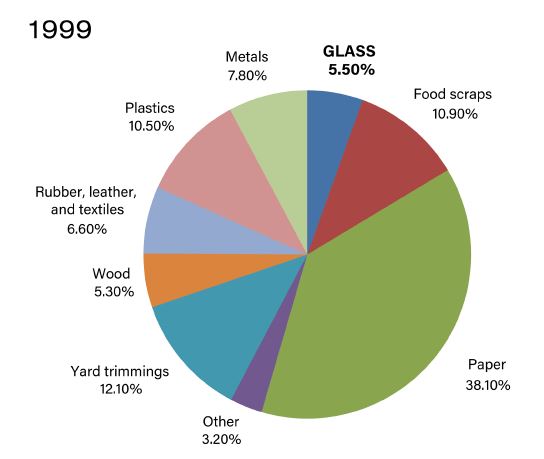

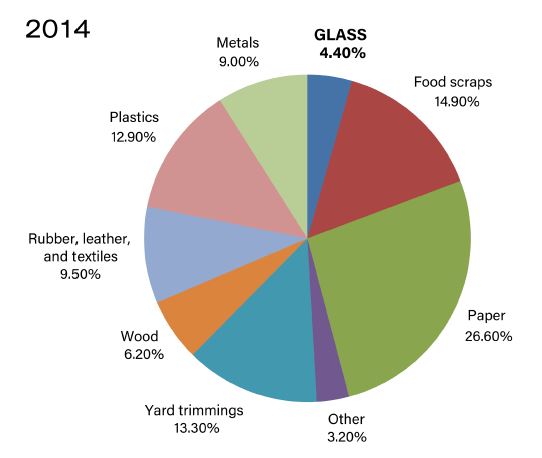
-
2016
- Target ceases glass recycling program due to contamination and a lack of infrastructure across the state.
-
2015
- Over 24 tons of recycled glass rocks are used in the Provo Center gardens in Missoula.
- Xanterra Parks & Resorts acquire over 54 tons of recycled glass to use in the concrete foundation of the new Columbia Falls garage that houses the famous Glacier Park Red Bus tour vehicles. Xanterra also tests adding recycled glass in curb and gutter repair at the Village Inn at Apgar.
-
2014
- Ash Grove Cement in Montana City takes recycled glass from the City of Helena. Glass is stockpiled when a 50 tons per month capacity is met.
- Four Corners Recycling outside of Belgrade processes the glass collected at Target in Bozeman.
- Target in Missoula notifies customers that if contaminates are found in the glass recycling container, the entire load is taken to the landfill. Problems persist.
-
2012
- Helena uses glass cullet in sand mix on winter roads. Some residents believe it causes damage to their vehicles.
- Ecomatrix Solutions manufactures sustainable, structural-grade cement made primarily from fly ash and pulverized glass. Glass is procured from the Livingston pulverizer. Dirty glass and labels often contaminate the product.
- The Legion Oasis affordable housing project in Butte uses recycled glass as landscaping rocks.
- Solar Roadways, Inc. uses 30 tons of Montana recycled glass in a pilot project due to its high quality.
-
2011
- House Bill 594 requires recycled materials, including glass, be used in new highway construction when the cost is lower or equal to new materials.
- Helena ReStore begins selling recycled glass landscaping rocks.
-
2010
- DEQ writes the Montana Public Works Standards Specifications, the guidebook for contractors outlining acceptable recycled materials for use in construction.
- The Hayfield Estates Subdivision in Helena uses glass cullet for septic field fill.
- The Missoula Federal Credit Union, Russell Street Branch, uses concrete made up of 100 percent fly ash and recycled glass, and no Portland cement, throughout the entire structure. The LEED certified building is believed to be the first of its kind in the world.
- Bayern Brewing in Missoula purchases a glass bottle washing machine. The brewery buys back its bottles and other qualifying bottles for five cents per bottle as long as they arrive in the company’s Ecopacks, contain no garbage, and have no chips.
- Ten Spoon Winery in Missoula begins washing and re-using bottles, saving an estimated 60 percent of the cost of purchasing new bottles.
- The C.M. Russell Museum in Great Falls builds its trails in the Russell Riders Sculpture Garden using over 1,000 tons of recycled glass.
-
2009
- Yellowstone Art Museum paves its parking lot with 5,700 square feet of recycled glass material Filterpave, keeping 501,600 beer bottles out of the landfill.
- The ITSD Data Center in Helena uses 132 cubic yards of pulverized waste glass as stormwater drainage around its building.
-
2008
- High Plains Architects use a mixture of pulverized waste glass and fly ash as an alternative to a standard concrete floor in its new office building in Billings.
- Glassroots in Bozeman creates tiles from waste glass collected from Yellowstone National Park.
- The City of Livingston purchases a glass pulverizer with help from DEQ and with a grant through the Department of Natural Resources & Conservation.
-
2007
- The DEQ works with Eliminate, an onsite wastewater treatment company in Belgrade, to use recycled glass cullet in all phases of its business. Glass sand is used in production of MetaRocks, which provide for nitrogen reduction and overall advanced wastewater treatment. Three eighths-minus glass cullet is used as tank bedding.
-
2006
- Missoula Valley Recycling ends glass recycling due to handling and hauling costs.
- Headwaters Cooperative Recycling pulverizer recycled 2,000 tons of waste glass into aggregate used in projects across the state.
- The 10,000 square-foot parking lot of the Northern Plains Resource Council is repaved with Gravelpave2, a semi-permeable paving product containing recycled glass.
- The DEQ and the Montana Department of Transportation partner to use 1,000 tons of recycled glass from the Boulder Landfill in a road project known as the “Curve,” northeast of Whitehall. Pulverized glass was mixed with aggregate and used as a base course.
- The Bozeman Landfill uses pulverized glass to landscape around its liquid propane tanks.
-
2003/2005
- New World Recycling starts glass pulverizing in the Flathead Valley.
- Headwaters Cooperative Recycling acquires a mobile glass pulverizer.
-
1998
- Glassphalt, an asphalt alternative that uses crushed glass, is used in the Mammoth parking lot in Yellowstone National Park.
- Missoula resurfaces 3,000 feet of Mullan Road using recycled asphalt, concrete, and glass.
- The Center for Resourceful Building Technology in Missoula receives a grant to foster the use of recycled glass in building materials.
-
1997
- Headwaters Recycling Cooperative begins services in southwest Montana.
- Bozeman uses a DEQ grant to develop a a project to crush locally generated waste glass along with gravel and incorporate the resulting mix in construction projects.
- Great Falls receives a DEQ grant to demonstrate the use of recycled glass as road-building material.
- DEQ grants a permit to Ashgrove Cement Company of Montana City to annually recycle 250 tons of post-consumer glass into its cement
Glass Recycling Challenges
Even though glass is made up of only silica (sand) and a small amount of other minerals, glass recycling is harder than most people think. Montana generates enough waste glass to be a problem, but not enough to lure industries here to utilize our collected glass.
Challenges to glass recycling in Montana include:
- Glass breaks easily and can create safety hazards for those involved with handling and transportation.
- Glass manufacturers have extremely high standards for recycled glass. Any foreign material that makes it past the glass recycling processing equipment can cause imperfections in containers, making it potentially unsafe for consumers – a big liability for glass manufacturers.
- Virgin glass is cheap to produce, while transporting used glass the distance needed to turn it back into container glass is economically challenging. Montana’s closest recycled glass markets are Seattle and Denver.
- A major hurdle for glass recycling is transportation costs. Collection, transportation, and processing costs negatively impact Montana’s small-scale recycling programs.
- Montana has a population of 1.04 million people spread across 147,164 square miles. Compare that to Seattle’s population of 652,405 people across 83.78 square miles, or San Diego’s population of 1.356 million across 372.4 square miles, and you get a sense of how far our relatively small amount of glass waste has to travel to get to a distribution center.
Contamination is the Killer in Glass Recycling
The amazing thing about glass is that it is 100 percent recyclable. It does not wear out and can be recycled over and over again without any reduction in the quality of new glass products. All types of glass have different chemical make-ups that alter their capability to be recycled. Container glass is the only glass that can be turned into cullet to be sold back to bottling plants for the use of furnace-ready cullet. Glass manufacturers have extremely high standards, any foreign material that makes it past the glass recycling processing equipment can cause imperfections in containers, making it potently unsafe to the consumer. This is a big liability concern for the glass manufacturer. The success of glass recycling depends on good quality glass coming back for processing, free from contamination.
What Contaminates Glass?
Some glass products are not suitable for recycling. They contain heavy metal oxides that can contaminate recycled glass and result in imperfection and poor quality product. Even the smallest amount of contamination will alter the chemistry of glass recycling, making the final product unusable. Contaminants include:
- Ceramics (dinner plates, coffee mugs)
- Window glass & mirrors
- Plastic, tin, aluminum lids/tabs
- Pyrex glass
- Wired glass
- Crystal & drinking glasses
- Light bulbs or tubes

Example of ceramic contamination.
Just one ounce of ceramic can contaminate a whole ton of glass. The whole ton of glass then has to go to the landfill, because there is no way to efficiently separate out the contamination.
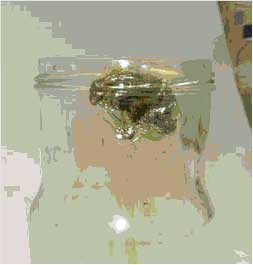
Example of iron contamination
Many people wonder why there are three colors used in the manufacturing of glass bottles. The reason is a simple. Most products are placed in clear bottles, called flint, to enhance product appeal. However, some products degrade if exposed to sunlight. Bottling companies make green or amber (brown) glass to enable longer product shelf life. This is why bottling plants only accept one of the three colors for processing. There is no special equipment to separate glass into three colors, so separation is done by hand. This may be performed by the recycler collecting the glass or by the public dropping off glass at separating bins. Rinsing containers to remove traces of food and beverages helps with odors that attract insects and rodents. Also, be careful not to break the containers when depositing the glass into collection bins, this ensures better safety for yourself and recycling workers. Quality control is a job we must all perform!
Please only deposit glass bottles and jars in the recycling bins!
Glass Pulverizer
At one time, a mobile glass pulverizer, owned by Headwaters Cooperative Recycling, helped meet some of the challenges regarding recycling glass in Montana. The pulverizer processed scrap glass into cullet (aggregate) which was appropriate for the uses described below. Unfortunately, Headwaters closed down and the pulverizer was sold to an out-of-state buyer. That mobile pulverizer is no longer available. However, several other pulverizers are in operation in Montana.

How it operated:
The pulverizer was mounted on a trailer with a generator powered by biodiesel. The pulverizer produced 3/8-inch and 1/8-inch minus cullet. Cullet is reduced glass that resembles gravel or fine sand.
Below are some of the potential uses for glass cullet:
The 1/8-inch minus glass cullet (fine sand) can be used in bunkers on golf courses. It forms an abrasive dry layer on the land surface, thereby creating conditions that can deter earthworms and add stability. Inter-particle friction is relatively high, making glass sand less susceptible than rounded natural sands to particle interpacking and compaction. It also improves drainage.
Glass cullet as a fluxing agent in brick manufacturing
In brick manufacturing, the principal raw material is clay supplemented with other materials such as sand, stains and select minerals. Recent research suggests that brick firing temperatures can be reduced by up to 100 degrees Celsius when glass is added at a rate of 10 percent by weight to the clay mix.
Glass cullet as a granular base material
Pulverized and screened glass cullet can be used as a granular base material. Recent studies of glass aggregate properties suggest that properly processed waste glass is well suited for use as a granular base material.
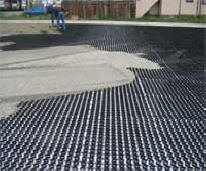
The Northern Plains Resource Council, located in Billings, used glass cullet in their parking lot, using the pave2 www.invisiblestructures.com recycled pad as the base with glass cullet as the filler.
Glass cullet use in septic tank drain fields
Sand filters are part of a non-proprietary anaerobic septic treatment system in which the sand acts as a mechanical and biological filter. Research suggests that using crushed recycled glass in place of sand may lower construction costs and improve the overall performance of the treatment system. A subdivision built in the Helena area used glass cullet instead of sand and gravel in the filter septic treatment system.
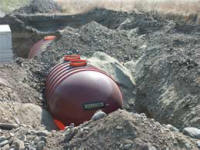
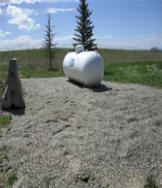
Glass cullet as landscaping material
The pulverizer’s processing method, which removes sharp edges of recycled glass to produce a safe alternative to gravel, sand and other landscape materials, has allowed glass cullet to become a high-profile design element. From rooftop gardens and pathways to hotel lobbies and private homes, cullet is replacing gray river rock with a splash of color. The Helena YMCA used glass cullet for paths around its community gardens.
The DEQ works hard to explore opportunities to recycle glass locally. The department recognizes that expensive hauling costs prohibit recycling programs that rely on out-of-state markets to pay for collected glass. Instead, as with other recyclables, Montana must encourage local businesses or programs to utilize collected materials. Such local businesses or “markets” contribute to cost-effective recycling programs and avoid expenses related to shipping recyclables out of state to industrial processors.
Objective
The Montana Department of Environmental Quality’s long term objective is to have market development projects establish local glass recycling opportunities. As stated earlier, transportation of glass over long distances for processing makes finding local uses vital to glass recycling in Montana. DEQ’s hopes are to showcase pilot projects to provide credibility that recycled glass cullet can be used in a wide variety of applications that will stimulate demand for the product, and offer a sustainable solution to rural glass recycling. These local markets make a significant impact on the glass cullet market value, especially for added value applications.
The following are examples of pilot projects throughout Montana communities using recycled glass cullet.
Northern Plains Resource Council Glass Parking lot, located in Billings, at 220 South 27th Street.
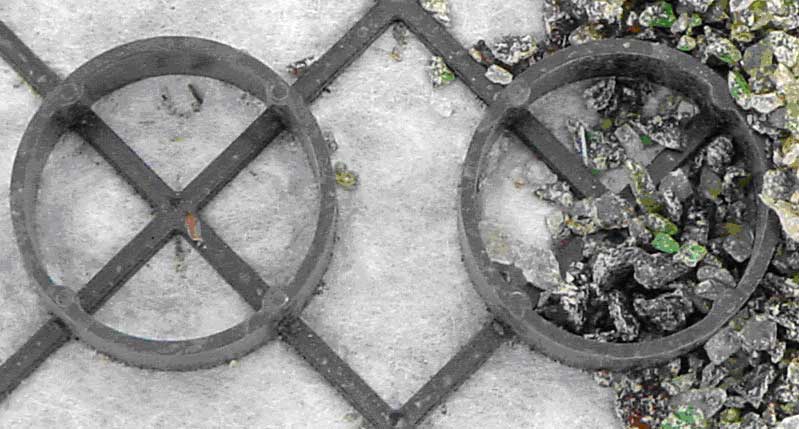
The parking lot was designed for water conservation. The recycled glass cullet (3/8-inch-minus in size) was placed on a grid of geotextile fabric, which holds the glass cullet in place and allows water to permeate the ground, rather than running into the city’s storm drains.
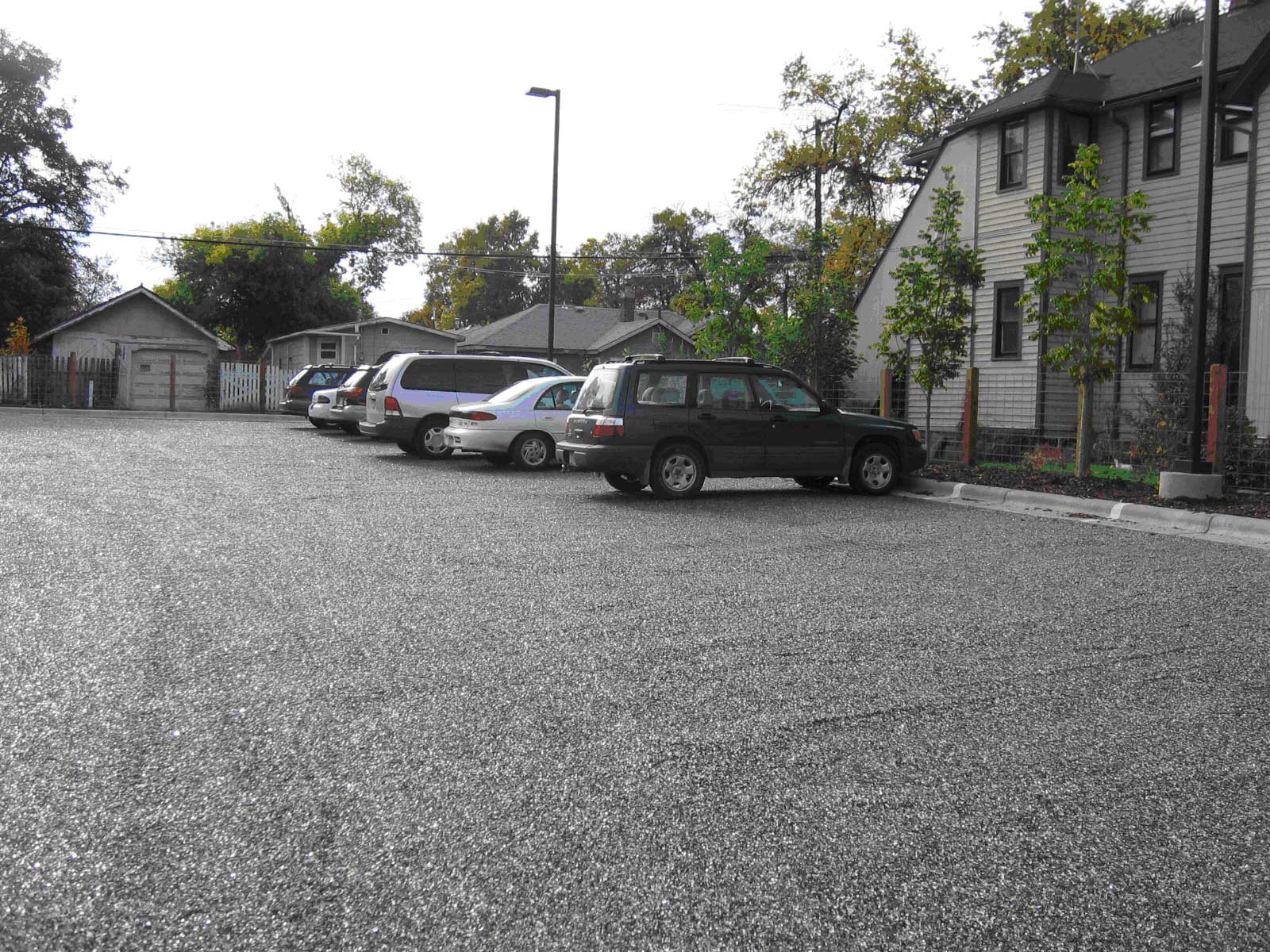
The DEQ and the Montana Department of Transportation (MDT) teamed up to use 1,000 tons of recycled glass from the Boulder landfill in a road project known as the "Curve," northeast of Whitehall. Specifications were written to allow the use of the pulverized glass in a 10 percent uniform pugmill-mix for the base course. The project was very successful and the contractor is willing to use the product for future road projects.
MDT Road Project: Whitehall, Montana
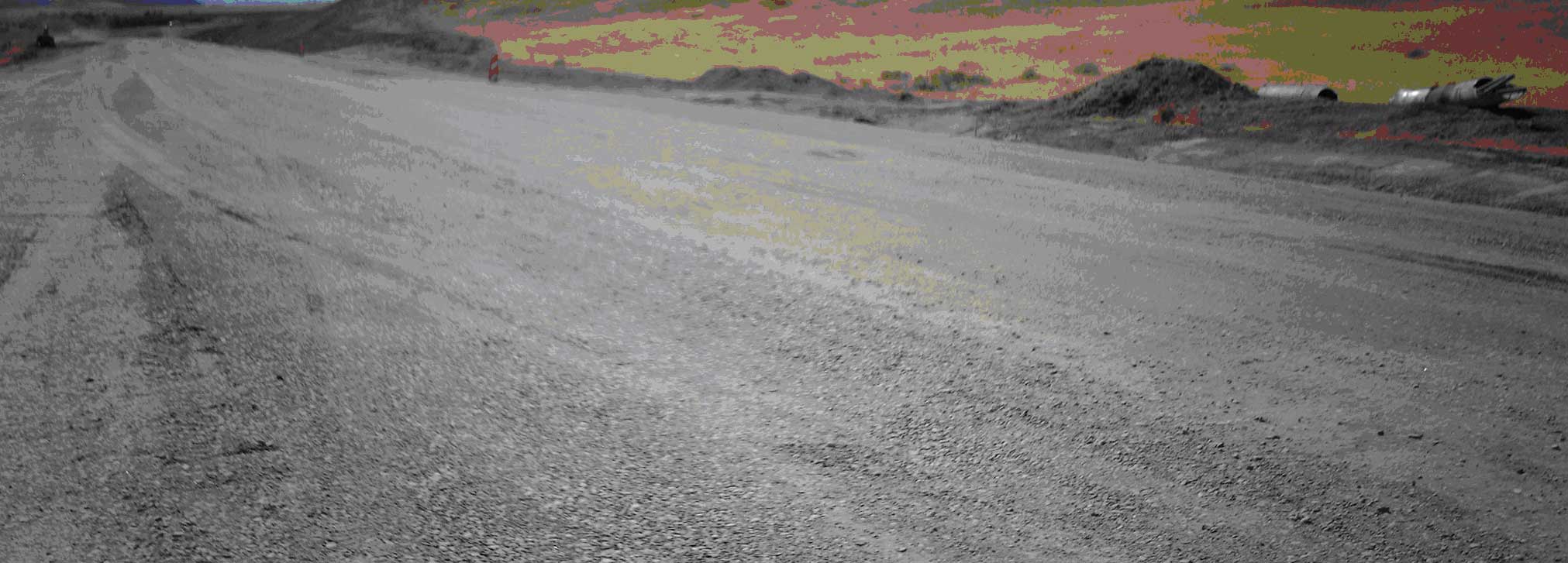
Eliminate: An onsite Wastewater Treatment Company, located in Belgrade (below)
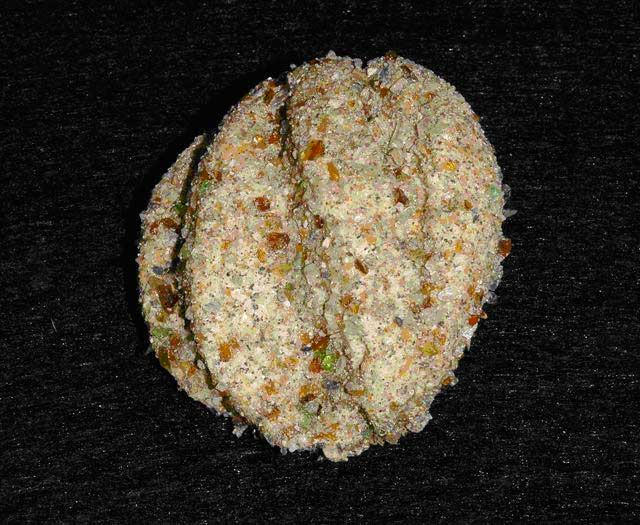
Eliminate is incorporating glass cullet into the coating of its proprietary product: MetaRocks. These rocks provide for nitrogen reduction and overall advanced wastewater treatment. This innovative and environmentally sound practice has given a green spin to the treatment and disposal of waste water.
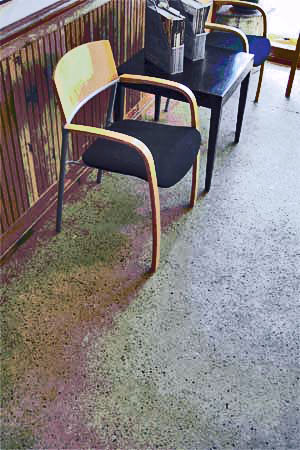
Billings Fly Ash & Recycled Glass Cullet Project
This project used recycled glass and fly ash as a unique alternative to a standard concrete floor. The High Plains Architects new office building located in Billings had this beautiful floor installed. The floor is composed entirely of pulverized glass and Class 'C' fly ash. There is no gravel, sand, or Portland cement in the two-inch topping slab. The concrete, which has a buff color without any added pigments, was batched by Knife River. After a short curing period, the two-inch topping slab was ground by ProCrete, revealing the multi-colored glass cullet. Finally, the slab was sealed with soy-based finish from Refuge Sustainable Building Center.
The floor is one of many green building features in the 2,000-square foot space built by Tim Davis Construction. High Plains Architects anticipates receiving LEED Platinum certification from the U.S. Green Building Council for the project.
Missoula Federal Credit Union Project, Missoula
This is a ground-breaking project with far reaching environmental benefits. It could potentially help change the way construction is approached worldwide. This building will be replacing traditional Portland cement, both structurally (i.e., footings, foundations, slabs, sidewalks, driveways, exterior classing panels, countertops, and flooring) and aesthetically. This will be the first known building in the world to replace all concrete with recycled glass and fly ash. This new cutting-edge mixture of glass and fly ash helps conserve resources. Traditional concrete production is estimated to consume about 10 percent of the world’s resources.
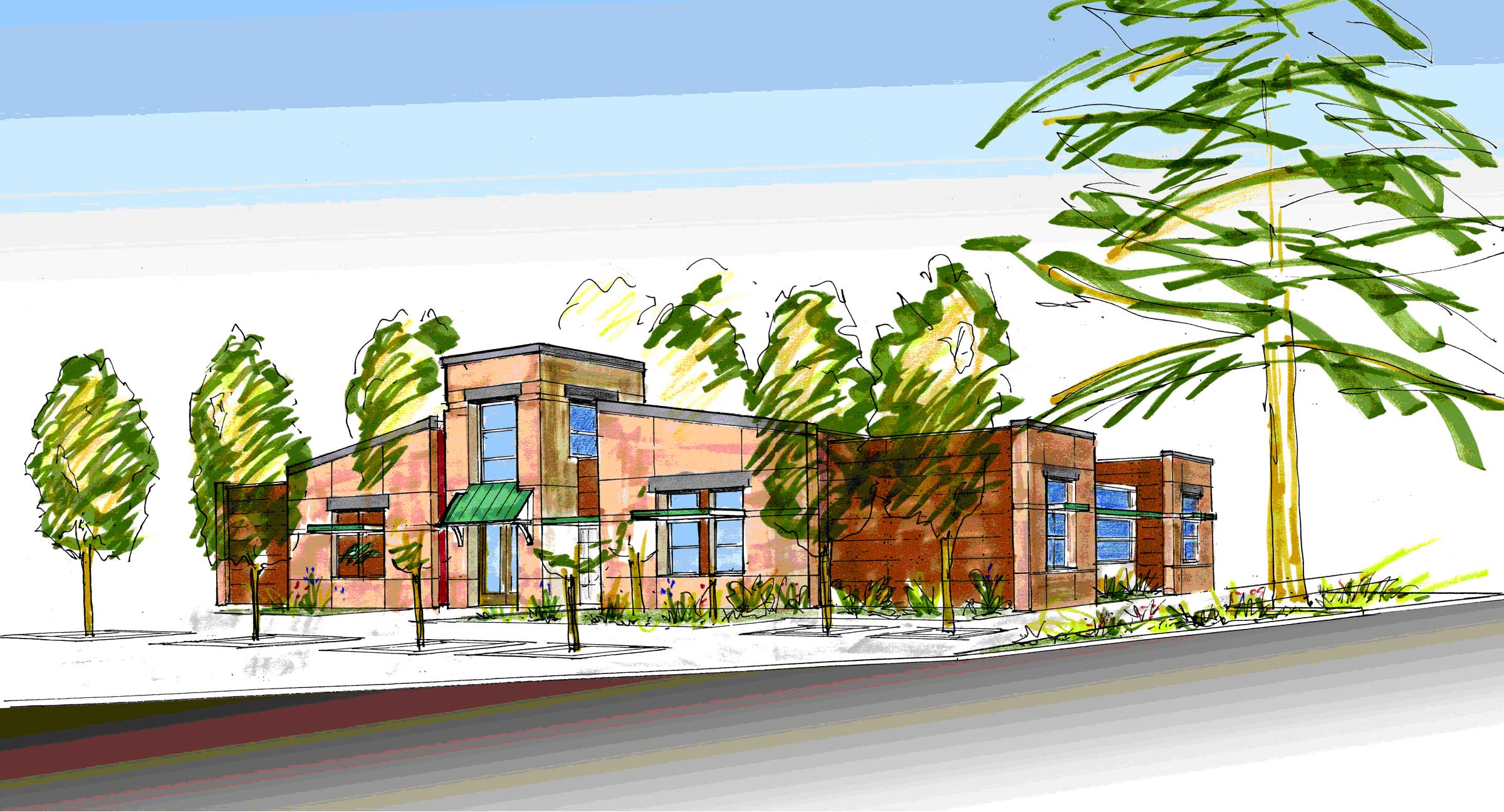
The commercial building (6,711 square feet) used more than 1,000 tons of glass and fly ash in the project. The building sets the mark in saving energy and resources.
Hayfield Subdivision in Helena
Sand filters are part of a non-proprietary anaerobic septic treatment system in which the sand acts as a mechanical and biological filter. Research suggests that using crushed recycled glass in place of sand may lower construction costs and improve the overall performance of the treatment system. Engineers working on the project for a new subdivision in Helena worked on final approval to replace the sand and gravel used in the sand filter septic treatment system with the glass cullet.
Hayfield has used cullet as septic tank drain field and drain pipe bedding instead of sand
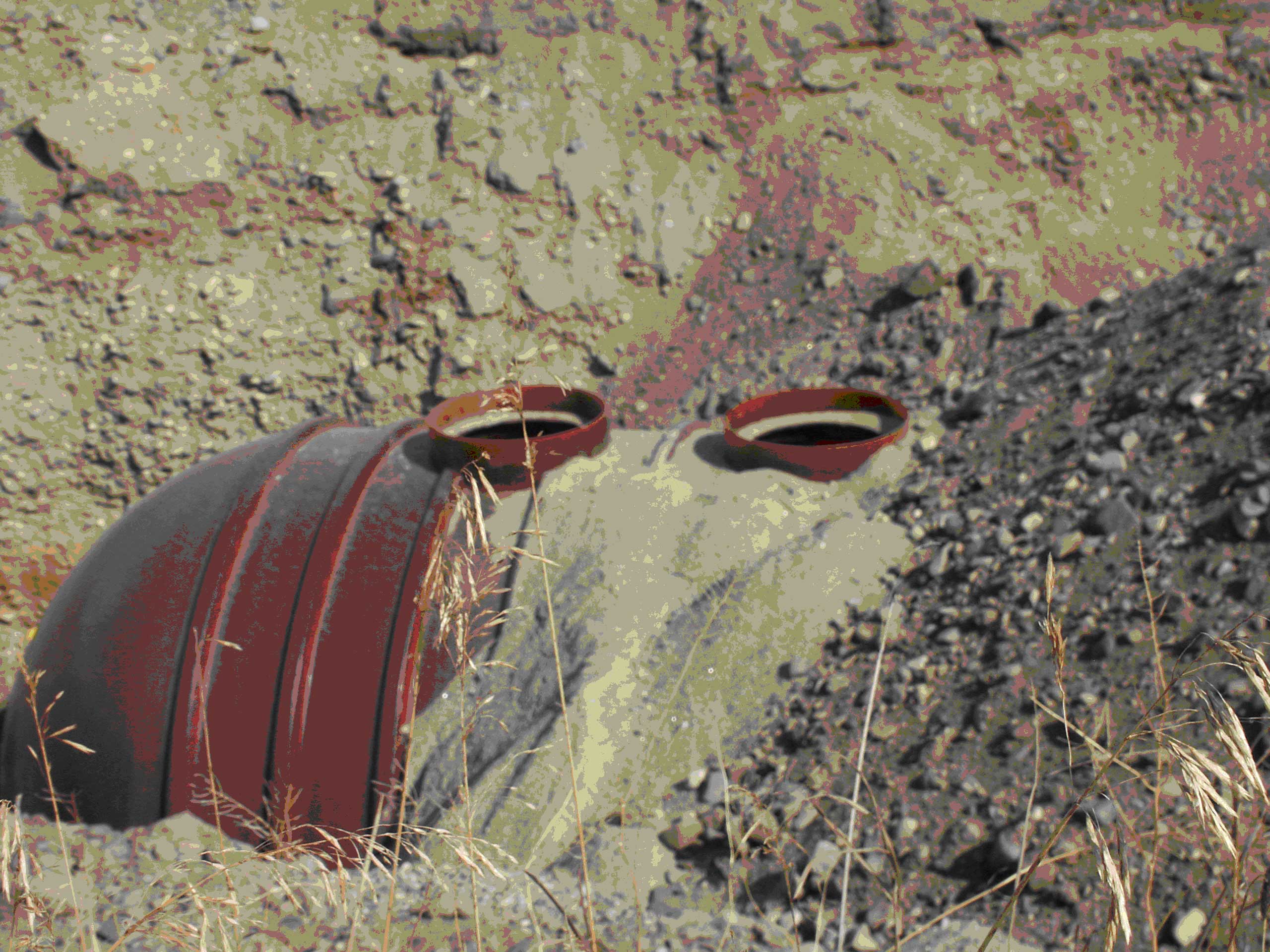
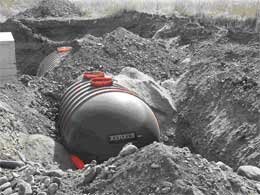
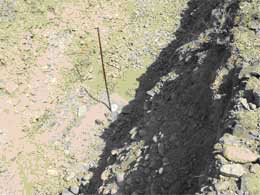
Plastics are modern, synthetic materials. Plastics are oil and gas based, and consume less than four per cent of our oil and gas reserves. The superior properties of plastics, such as their hygiene (clean or free from disease causing microorganisms), their fluid and air barrier capacities, and their light weight and durability contribute significantly to our health and quality of life. The tremendous growth of the plastics industry is expected to continue. The factors that have contributed to this growth include the energy efficiency of plastic. All studies show that it takes less energy to make a product from plastics than just about any other material. As plastics continue to demonstrate that they are a safe and reliable alternative to traditional materials, new applications will emerge.
Why are there so many different types of plastics?
The reason is that the actual type of plastic used is determined by the demands of the application. For example, if the plastic bottle needs to be squeezable, like a mustard bottle, then it’s going to be made of a different plastic from one that doesn’t need to be squeezable, like a milk jug.
All plastics are not created equal. Some seal in moisture or seal out air more effectively than others. Some are stronger, some lighter, some easier to work with, and some are more economical than other plastics to process. Each plastic type brings a unique blend of properties to the packaging design table and has been engineered to package a particular type of product. For example, PET plastic or "1" plastic, has been specially designed to help soft drinks remain carbonated. This plastic has been designed for an excellent gas and moisture barrier, making it the ideal choice for other applications as well, such as edible oils and salad dressings.
Recycling Plastics
The Department of Environmental Quality promotes recycling and works to develop markets for recyclables within the state. Recycling of all plastic bottles is strongly encouraged, primarily PET 1 and HDPE 2 bottles, because there are well-established end-markets for these types of plastics. Markets for recyclables are the key to recycling success. By building these new markets for other types of plastics, the ease of recycling for all types of plastic will be as available as those for HDPE 2.
Developing local businesses or markets for recyclables is key to successful long-term recycling in Montana. Establishing local markets for recycled materials is important for a number of reasons, including: reduced need to transport collected materials over long distances; reduced need to import raw materials and end products; expansion of the local manufacturing sector; creation of employment opportunities; preservation of natural resources; and expansion of the local tax base.
Why Is Recycling Plastics Important?
Recycling and reuse of plastics have the obvious benefit of decreasing the amount of used plastics that end up in landfills. With increased plastics recycling, fewer natural resources need to be extracted to produce virgin plastic. Producing new plastic from recycled material uses only two-thirds of the energy required to manufacture it from virgin raw materials. Five two-liter recycled PET bottles produce enough fiberfill to make a ski jacket; 36 recycled bottles can make one square yard of carpet.
In addition, a great amount of plastic waste is found in the world's oceans. "The world now uses 230 million pounds of plastic annually ... much of this is for one-trip packaging that is thrown out within a year of production, on average. Because the plastic that enters the ocean tends to fragment, it is likely to remain in the environment for hundreds, if not thousands, of years,” notes Richard Thompson, a researcher at Plymouth University, U.K., who has published two studies on plastics in oceans and the effect on marine animals.
Recycle Your Plastics - This site is designed to offer an easy-to-use gateway for information on plastics recycling.
Visit Where To Recycle or go to www.Earth911.org to find out what kinds of plastics can be recycled in your area.
Follow these tips when Recycling Plastics
- Rinse your bottles.
- Remove caps from bottles. Caps are made from a different kind of plastic and contaminate the plastic.

- Stomping your plastic bottles before placing the crushed bottles in the proper recycling bins will save your community money. So STOMP IT!
- Check with your recycler to see what kinds of plastic the business handles and only put the kinds of plastics your recycler accepts in the bin. Also, unless your recycler asks for more than bottles, only place bottles in recycling containers.
Office Paper
Check with the nearest recycling business, such as Pacific Steel & Recycling, Allied Waste Industries, and BFI to find out if they accept office and mixed paper for drop-off from individuals and businesses. If one of these businesses is not located in your town, be sure to check with your local recycling organization. Also check the Earth 911.org website for locations by typing in your zip code.
Paper Bags
Paper grocery bags can be recycled with cardboard. Please remove any contaminants (trash & non-cardboard items) and put in cardboard collection bins.
Plastic Shopping Bags
Most grocery stores will accept back plastic shopping bags for recycling. Look for a barrel just inside their doors that is marked for recycling these bags.
Hint: if you reuse these bags for garbage, please “Tie A Knot” before placing in the garbage. This helps prevent the wind from catching loose plastic bags at the landfill and littering the area surrounding the landfill.
Smoke Detectors
DEQ encourages recycling of smoke detectors because some smoke detectors contain small amounts of radioactive material. Smoke detectors can be recycled by sending them back to the original manufacturer, or taking them to a household hazardous waste collection event. Contact your local public works department to ask about upcoming hazardous waste collection events.
Following is a list of major manufacturers of smoke detectors in the U.S.
- First Alert/BRK brands
1-800-323-9005 - American Sensors
1-800-387-4219 - Code One/Firex/Maple Chase
22820 Thatcher Road
Downers Grove, IL 60515 - Safety's Sake/Funtech
388 N. Elliot Creek Road
Amherst, NJ 14228 - Dicon
3334 Main Street
Skokie, IL 60076 - Life Saver/Frynetics, Inc.
1055 Stevenson Court, Suite 102
W. Roselle, IL 60172
Printer Cartridges
These retail stores accept inkjet cartridges for recycling.
- Best Buy (cell phones, inkjet cartridges, and rechargeable batteries)
- Recycling for Charities - Protecting our earth while helping charities! Donate your old ink or toner cartridge to be recycled and benefit the charity of your choice!
Reducing, Reusing, and Recycling in State Government
DEQ staff provide assistance to local and state government employees wishing to learn more about reducing waste, recycling more, and using natural resources wisely. The list of resources and tools here provide information on diverse programs available to help governments manage solid waste and promote sustainable activities.
Local Governments
Pay-As-You-Throw
Waste collection fees are not always obvious to residents. Rate structures that directly tie to the amount of garbage generated can provide incentives for increased recycling, waste reduction and backyard composting activities.
Cooperative Purchasing Program
Local and Tribal Governments can purchase supplies and services in cooperation with the State of Montana through the Cooperative Purchasing Program. This program allows local and tribal governments to benefit from the greater buying power of state government and realize increased savings on many purchases. Local and tribal governments must enter into an agreement with the State of Montana as explained at the above link.
Mercury Containing Lamp Recycling
DEQ urges schools, local and tribal governments to take advantage of the term contract for recycling of fluorescent bulbs that contain mercury. These bulbs should not be thrown out in the trash; rather, they should be recycled. The successful contractor sends trucks on "milk runs" to pick up bulbs from diverse Montana locations in response to requests for service. Review the contract for contact information and specific requirements.
Term Contract T.C. # SPB05-954D, Effective July 1, 2010
DEQ Solid Waste Management
DEQ is responsible for regulating solid waste management in Montana. This website provides assistance with solid waste permits, applications, and regulatory requirements.
State employees “Lead by Example” and every one of us can be leaders in Source Reduction, Reuse and Recycling.
Follow the links below to learn how to reduce environmental impacts and promote Sustainable Government.
- Responsible Purchasing
State funds spent wisely will contribute to local economies, encourage production of "healthy-for-us" products, and "close-the-loop" on recycling.
- Recycle
State-sponsored paper recycling program, battery and cell phone recycling programs, and more.
- Recycling Market Development Task Force (RMDTF)
This task force provides guidance to DEQ and Department of Administration staff regarding responsible or green products to target for increased acquisition, and suggests changes in operations or policies that enable agencies to implement sustainable operating practices.
- Sustainable Operations
State agencies are engaged in diverse sustainable operations that support a healthy Montana economy, while using tax dollars wisely. This waste reduction program is a result of the Montana Integrated Waste Management Act of 1991. The Act directs state government to assume a leadership role in developing and implementing source reduction and recycling programs and in developing markets for the purchase and use of recycled materials. DEQ coordinates this program and provides technical assistance to agencies and state employees.
3Rs in State Government
Tools and Factsheets
Many organizations have developed tools that will help State agencies continue to enhance their Reduction, Reuse and Recycling (3Rs) efforts. State agencies are also learning a great deal from their ongoing 3Rs experiences and developing useful information that can be shared with other agencies and organizations. A sample of these tools and factsheets are available below. We will continue to post new information to help others learn from these experiences as it is developed.
Recycle at Work
Rechargeable Battery and Cell Phone Recycling
This free service provides boxes and shipping to collect and recycle rechargeable batteries and cell phones. Sign up your agency or work group by contacting the Recycling Program at DEQ.
Cell Phone Recycling
Provides boxes and pays shipping costs for collecting cell phones. Sign up your agency or work group by contacting the Recycling Program at DEQ.
Alkaline Battery Recycling
Does your office use disposable alkaline batteries? Dispose of this hazardous waste properly through a mail-service program. (Or better yet - buy and use rechargeable batteries available through Central Stores.) Please note that there is a cost to the mail-service program. Sign up your agency or work group by contacting the Recycling Program at DEQ.
Montana State Constitution
Article II Declaration of Rights
Section 3. Inalienable Rights
- States that all persons have a right to a clean and healthful environment.
Article IX Environment and Natural Resources
Section 1. Protection and Improvement.
- The state and each person shall maintain and improve a clean and healthful environment in Montana for present and future generations.
- Directs the legislature to provide adequate remedies for the protection of the environmental life support system from degradation (natural resources).
Montana Statutes
75-10-803. Solid waste reduction goal and targets.
(1) It is the goal of the state to reduce, through source reduction, reuse, recycling, and composting, the amount of solid waste that is generated by households, businesses, and governments and that is either disposed of in landfills or burned in an incinerator, as defined in 75-2-103.
75-10-806. State government procurement of recycled supplies and materials.
- Directs the Department of Administration to write purchasing specifications requiring materials/supplies made from recycled materials.
- “If the use is technologically practical and reasonably cost-effective.”
- Establishes a goal that 95 percent of paper product purchased by state agencies must be made from post-consumer recycled material.
- Establishes this task force to:
-
- (a) assist DOA develop purchasing specifications;
-
- (b) develop methods for state government to increase markets for preferred products;
-
- (c) identify procurement barriers that discriminate against preferred products; and,
- (d) recommend activities for employee educational program.
-
10x20 Energy Initiative (per Governor Schweitzer’s memo of 1/15/08):
- Directs state agencies to:
- “Lead by Example to make smart decisions and changes in state government to address climate change.”
- Directs agencies to implement the tasks outlined in a 1/15/08 memo from DOA and DEQ.
- Includes energy savings recommendations, and “buying green products.”
Measure and Calculate Savings
Use these online calculators to measure reduced environmental impacts, including energy saved, greenhouse gases reduced, avoided pollution, and resources saved.
- Report the results in the semi-annual reports on agency efficiency to the Department of Administration.
- And report results as part of agency green purchasing activities under the 20x10 Energy Conservation Initiative.
WAste Reduction Model (WARM)
Does your office recycle? Get credit for all your efforts by calculating the reduced environmental impacts of recycling.
WARM calculates and totals GHG emissions that would occur if a measured amount of waste is recycled, composted or landfilled. The EPA model calculates emissions in metric tons of carbon equivalent (MTCE), metric tons of carbon dioxide equivalent (MTCO2E), and energy units (million BTU) across a wide range of material types commonly found in municipal solid waste (MSW).
Recycled Content (ReCon) Tool
Does your office buy recycled-content products? Use this calculator to get credit for your purchases. The EPA Recycled Content (ReCon) Toolestimates life-cycle greenhouse gas (GHG) emissions and energy impacts from purchasing and/or manufacturing recycled-content materials.
Paper Calculator
Make better choices about the paper used in your office. Placing paper in the recycling bin is just the beginning of the recycling loop – close the loop and support recycling by purchasing the highest recycled-content paper affordable.
Use this calculator provided by the Environmental Defense Fund to calculate the wood, water and energy saved, as well as trash and pollution avoided. Change to 100% recycled-content paper for the most impact. (See Buy This – Not That Handout) for Central Stores product information).
Electronics Stewardship Calculator
Starting soon, state term contracts for computers will be required to meet EPEAT standards for recyclability, fewer toxic ingredients, less packaging, energy efficiency, and more. Visit the EPEAT site before purchasing new computers.
Energy Star Savings Calculators
Scroll down the page to find energy savings calculators for consumer and commercial equipment ranging from building materials, to computers to dishwashers.
Greenhouse Gas Equivalencies Calculator
Can’t make sense of all those GHG numbers and equivalents? Use this calculator to turn those numbers into something easier to understand.
Developed by the US Climate Technology Cooperation, this calculator expresses GHG data in a way that is easier to comprehend, such as number of cars, gallons of gasoline, acres of forest, etc.
For more information and to seek assistance contact:
Dusti Johnson
Recycling and Market Development Specialist
406-444-6499
dujohnson@mt.gov
Find "Green" Contract Language
Proposals for Bid and final contract language are tools that provide important instructions for vendors. Use these tools to ensure that the products and services needed by your agency contribute to personal and environmental health.
The State Procurement Office already includes requirements for recycled-paper and many recycled-content products. Many of their contracts also require energy-efficient products and products with fewer hazardous ingredients.
Consider this:
- Many products today contain substances known to be carcinogenic or toxic.
- Sick Building Syndrome: Reduce exposure to toxic gas released from products containing formaldehyde, phthalates and other harmful ingredients that change the quality of air we breathe.
- Many, many alternatives are available to manufacturers –your contract could be the push they need to reduce the harmful ingredients in their products!
- Ask us for help!
- Product Stewardship Institute (PSI)
PSI is a membership-based organization that encourages product design changes to reduce the health and environmental impacts of consumer products.- The Department of Environmental Quality has joined PSI and participates in national discussions with manufacturers, retailers, federal agencies and environmental groups working to work towards solutions regarding federal electronics stewardship legislation, reducing use of mercury and other harsh chemicals in products, and much more.
Find "Green" Products
Montana-Specific:
- Organic Consumers Association keeps an online Directory of Eco-Friendly Products in Montana
- Western Sustainability Exchange. Provides information on sustainable food grown in Montana, as well as some sustainable products.
Other Resources:
- U.S. Communities Government Purchasing Alliance
A great source for “green” contract language. Also a one-stop source for public agency access to a broad line of environmentally certified products and services. - GreenSeal.org
- SCS Eco-Products
Currently certified products include office furniture systems, components, and seating, building materials, carpet and rug, hard surface flooring, paints, finishes, wood products, and cleaning products, among others.
Using the state’s purchasing power to “Close the Loop” and create markets for recyclables.
Recognizing that we need to create our own markets for recyclables here in Montana, this task force was created to use the state’s purchasing power to create demand for products with recycled content.
The Task Force was created to provide direction for state procurement personnel regarding environmentally-friendly products to target for purchase, explore new green purchasing initiatives, and encourage policy changes that create more environmental stewardship opportunities for agencies and employees.
Current Activities and Priorities:
- Advocate for purchase 100% recycled-content copy paper.
- Increase awareness of Universal Waste management (recycling) requirements for spent fluorescent lamps as agencies complete lighting retrofits.
The Department of Environmental Quality has primary responsibility for the task force, but shares this responsibility with the Department of Administration. Please contact Dusti Johnson with any further questions.
Source reduction is an important part of reducing impacts. Buying only what is needed, seeking recyclable products, reducing paper use, and similar actions reduce costs and promote sustainable operations.
State agencies routinely seek to lower operating costs by increasing energy efficiency and promoting energy conservation.
Responsible Purchasing
Purchasing Energy Star-rated equipment, recycled-content products and other sustainably-made products helps reduce overall energy use, while encouraging market development of such products.
- Re-Use Tips for the Office (68KB)
- Source Reduction Tips for the Office (145KB)
- Set Printer Default to 2-Sided Printing
- Paper Recycling for State Offices (84 KB)
Energy Conservation Tips for Your Desktop
State agencies currently spend over $17 million per year on electricity and natural gas, and these costs are likely to increase dramatically in the future.
Every kilowatt-hour of electricity you avoid using that is produced from a coal-fired utility reduces global warming carbon dioxide emissions by two pounds. Substituting one 20-watt compact fluorescent light in place of one 75-watt incandescent light bulb saves over 1,300 pounds of carbon dioxide emissions and 20 pounds of sulfur dioxide over the life of the compact fluorescent.
Energy Saving Actions Employees Can Take
You can take the following steps to further energy conservation in your own workspace:
Lighting
- Turn off office and task lights when not in use and at the end of the workday.
- Whenever possible, open blinds for natural light, and use a task light at your desk rather than overhead lights.
- Use sub-compact, screw-in fluorescent lamps (CFLs) in all task lights, unless you require other lighting due to eye problems.
Try this at home also, you will be amazed at the savings.
A 15-watt sub-CFL will provide a 75% savings over a 60-watt standard incandescent, (provide the same lighting) and result in approximately $30 in cost savings over a five year period. Their useful life is usually 10,000 hours compared to 1,000 hours for a standard incandescent.2 - For rooms with occupancy sensors, including bathrooms, do not press the switch to turn off lights. That deactivates the sensors, which are designed to save energy by using timers.
- Schedule meetings and other group activities in a room that is no larger than necessary.
- Employees who work outside normal work hours should use task lighting or natural lighting as much as possible, to reduce the need to turn on overhead lights for a large area.
Heating
- Employees who use a space heater during cold weather may be able to reduce or eliminate the need for the heater by dressing warmly and in layers, to accommodate fluctuations in temperature.
- Remember to turn off any space heater when away from your workstation.
- If you are consistently too cold, ask your Manager to find another location to seat you.
Reusable Products
- Substitute reusable products for disposable products, whenever possible. For example, bring your own utensils, plates, and cups for eating at work. Cloth hand towels eliminate the need for paper towels in the bathrooms.
- If you must use disposable products, make sure that they contain post-consumer recycled content.
Recycling
- Recycle all waste office paper and aluminum cans in containers provided for that purpose.
Computers
- Completely shut down (turn off) your personal computer when it will not be used for an hour or more and at the end of the workday.
- Turning off your monitor alone will account for substantial savings.
Monitors account for about 2/3 of the energy used by a P.C.
Based on current costs, a 100-watt computer (excluding monitor draw) can use $70 of electricity per year if left on all the time. This cost is reduced by $50 if turned off at night and on weekends. Modern computers undergo more wear from running constantly than from being turned on and off.3 - Some "screen savers" use as much energy as working on a complex document. Choose a blank screen, you will save energy.
- Use the Energy Star features of your computer to automatically turn off the screen when it’s not in use for a specified time, such as when you are away for more than a half hour. To set energy savings features:
- Go to "Start" in the lower left portion of your screen and click on "Settings" (Remember that screen savers do not save energy but the Energy Star features do. 4)
- Open the Control Panel Dialog Box
- Click on "Display"
- Choose the "Screen Saver" tab
- Under "Energy Saving Features of Monitor" select one or both of the energy saving features by checking the boxes and decide the amount of time you want before the features are activated.
An occasional machine will have TECHNICAL DIFFICULTIES with these functions. If you still have questions or any type of problem, check with your information technology bureau staff.
Office Equipment
- Managers should assign a particular individual in each work area to shut off office equipment, such as copiers, at the end of the day.
Consumption of Paper and Other Products
- Eliminate any unnecessary consumption of products, such as paper, that require energy for production and recycling.
- Share copies of magazines and other publications with other employees when possible.
- Reuse items like paper clips, rubber bands, and paper with print on only one side.
- Have your computer set to print on both sides of paper and whenever appropriate, edit documents on the computer, rather than printing.
It takes 10 times more energy to manufacture a piece of paper than it does to copy an image onto it. 4
Air Flow - Metcalf Building
- Three separate air distribution systems operate within the Metcalf building. Therefore it is important to keep doors and windows closed as much as possible, as open passages create problems with these systems.
- If you experience temperature comfort problems, let the appropriate contact person know. Standard temperature comfort settings are 69-71 in the winter and 74-78 in the summer, as directed by the Governor in Executive Order 03-01. 5
Other Energy Savings
- Inform management of any "non-essential" activities that are using energy and any other measures that reasonably could be taken to reduce energy consumption.
Education
- All employees of DEQ should encourage others to join the energy conservation effort. Managers should solicit staff input concerning current and potential energy savings efforts. This should be an on-going process.
